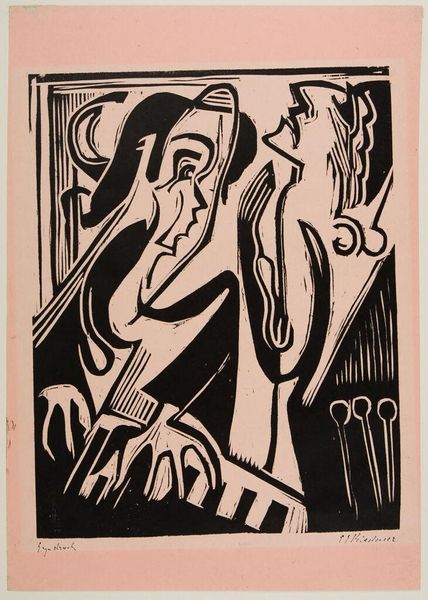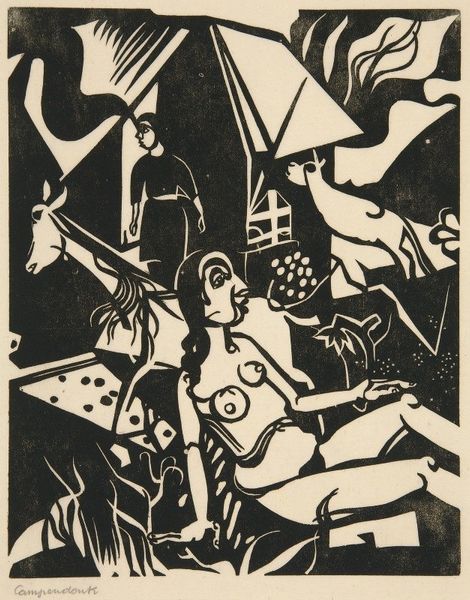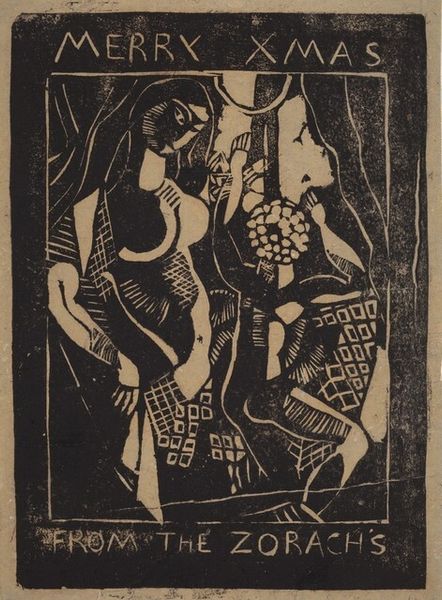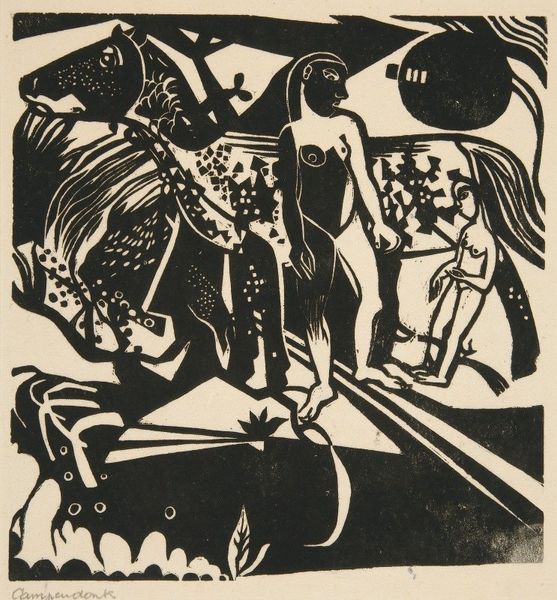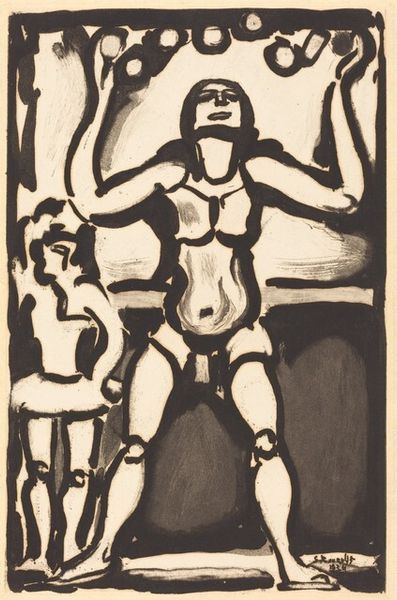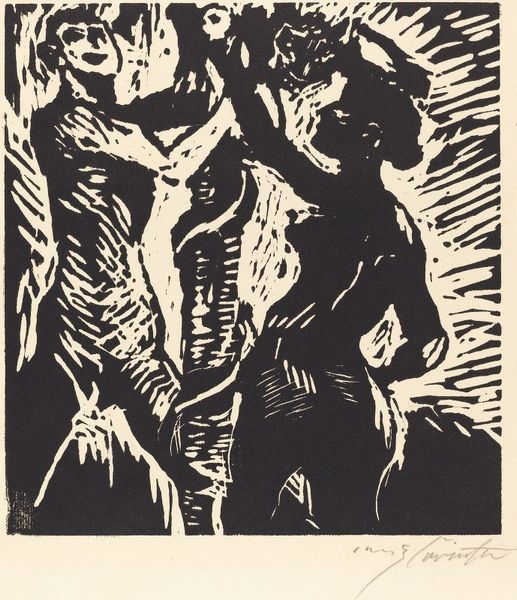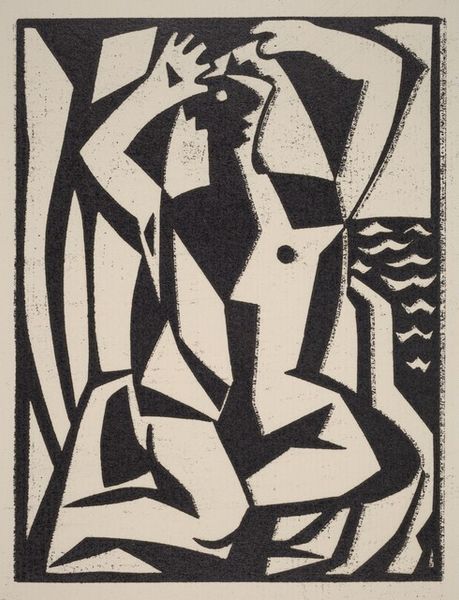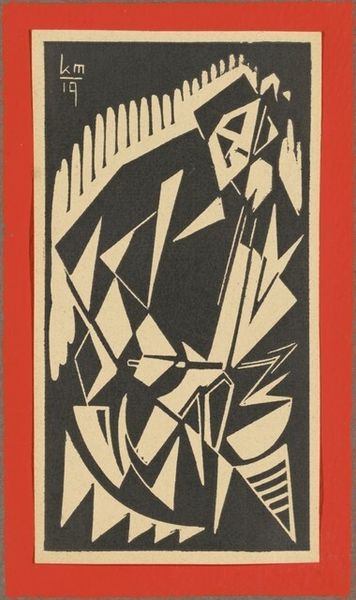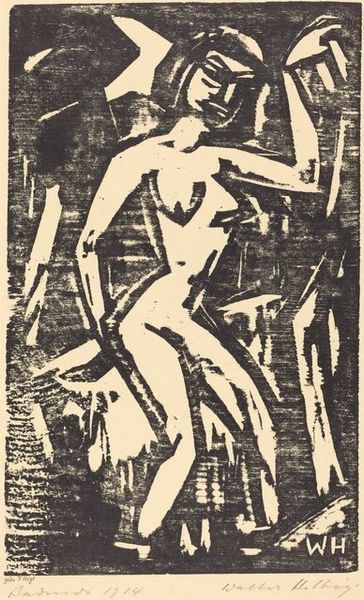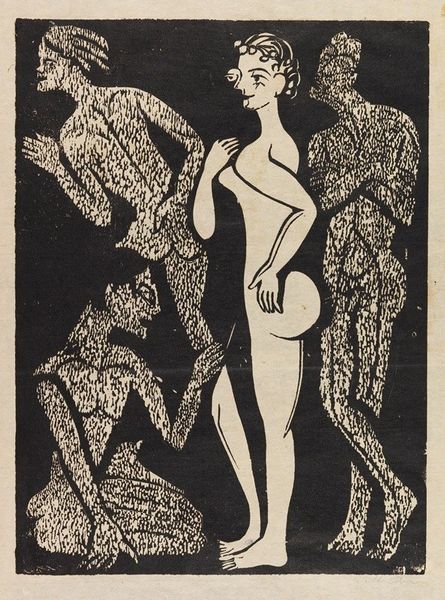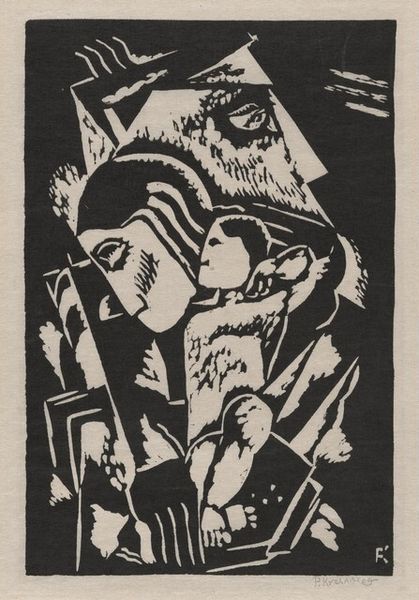
color-lithograph, print, linocut, poster
#
abstract-expressionism
#
popart
#
narrative-art
#
color-lithograph
# print
#
linocut
#
pop art
#
figuration
#
linocut print
#
pop-art
#
poster
Dimensions: 21 15/16 x 16 15/16 in. (55.72 x 43.02 cm) (sheet)
Copyright: No Known Copyright
Curator: This stark image, titled "The Family," is a color lithograph, linocut and print by Su Negrin, created in 1970. What strikes you about it? Editor: The raw immediacy. It feels confined, almost claustrophobic. The figures are reduced to their most basic forms, all crammed inside this simple, house-like outline. It's quite jarring. Curator: It is. Considering Negrin’s printmaking process – the physical act of carving into linoleum, the layering of color – perhaps that intensity emerges from the very labor invested in its creation. We're witnessing a handmade object, not a mass-produced one. The artist's hand is evident. Editor: Yes, but consider the symbolism. The "house" isn't a haven; it's a cage. The figures inside convey distinct emotions – despair, struggle. The arrangement places the female figure at the forefront, monumental and statuesque. A visual language that conveys complex ideas about familial roles and domesticity in the 70s. Curator: I see your point about the house becoming a cage. Given the time it was made, during the second wave feminist movement, Negrin might be offering a commentary on domestic confinement. The choice of printmaking allowed for wider distribution. This work could be a poster meant for a broader social engagement, to fuel conversation. Editor: Absolutely. The red evokes a feeling of raw anger, visceral discomfort. Red carries across different eras and different cultures potent emotions— it signifies a passionate warning, alarm, and life energy. I read it here as protest against a stifling institution. Curator: Fascinating how Negrin harnesses a seemingly simple technique to express such loaded themes. The materiality is not just the means, but also the message. Editor: Indeed. This image acts as a charged icon. The visual sparseness concentrates the message, echoing deeply personal and collective struggles around societal roles. Curator: So, looking at the artist's choice of process and the symbolism inherent within the artwork reveals powerful layers about family, gender roles, and social context during that era. Thank you for sharing your perspective! Editor: Thank you; It's an artwork that stays with you long after you’ve seen it. The longer you ponder, the more it triggers new interpretations.
Comments
No comments
Be the first to comment and join the conversation on the ultimate creative platform.
